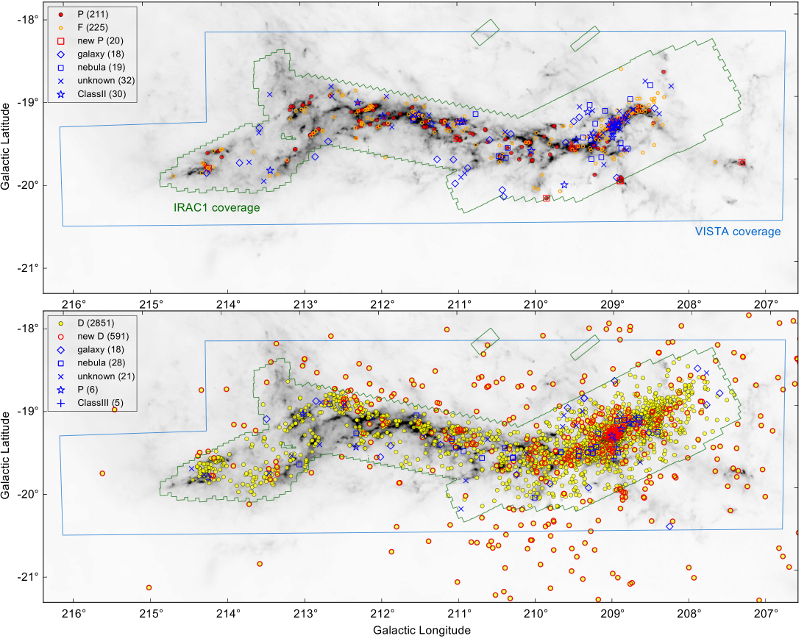| EPoS Contribution |
|
The Star Formation Rate and Efficiency map for Orion A
Josefa Grossschedl IfA, Vienna, AT | |
| The Orion A molecular cloud harbours the closest regions of massive star formation hosting a rich population of YSOs mostly still associated with the cloud. The region is a benchmark for studying star formation and therefore it is critical to have the most reliable and complete sample of the young stellar population. In this work we present a refined catalogue of Young Stellar Objects (YSOs) in Orion A, making use of a new high-resolution, complete, near-infrared imaging survey with VISTA of Orion A (VISION project), complemented with archival data (Spitzer, WISE, 2MASS, XMM-Newton, Chandra). The new VISTA data allow us to rule out about 150 (5%) contaminants in previous samples, mainly galaxies and bright nebulae (e.g., Herbig Haro objects), and re-classify also about 5% of the previously known YSOs. We used mid-infrared data from WISE for areas not covered by Spitzer to get a complete census and to determine the spatial distribution of YSOs in Orion A in a wide field. This allowed us, for the first time and in a global and uniform manner, to construct a map of Star Formation Rate (SFR) across the entire complex. In connection with the Herschel dust column density map we will further derive a map of Star Formation Efficiencies. | |
 | |
| Caption: The Figure shows the distribution of YSOs in the Orion A region plotted on the Herschel dust column density map (Lombardi et al. 2014). Also the contours of the IRAC and VISTA coverages are shown. Top: Distribution of Class I Protostars (P, red) and Flat* SED Class YSOs (F, orange), whereby newly found Protostars are shown with red squares (NP). Sources previously miss-classified as Protostars (e.g. by Megeath et al. 2012) are shown in blue. We found them to be contamination (see legend), or they were re-classified as Class II (D, star symbols) or Flat. Bottom: Similar as above but for the Class II Disk population (D, yellow) with new Disks (ND) as red circles. The ND outside the IRAC covered area were mainly found by WISE. Again contaminants or re-classified sources are shown with blue symbols. (Note: Still preliminary results.) (*Flats are between ClassI and ClassII YSOs and could not be classified clearly yet as one or the other.) | |
| Collaborators: J. Alves, Uni Wien, AT C. Lada, CfA, US J. Lewis, CfA, US P. S. Teixeira, Barcelona, ES S. Meingast, U Wien, AT A. Hacar, U Wien, AT J. Forbrich, U Wien, AT |
Suggested Session:
Galactic Star Formation |

